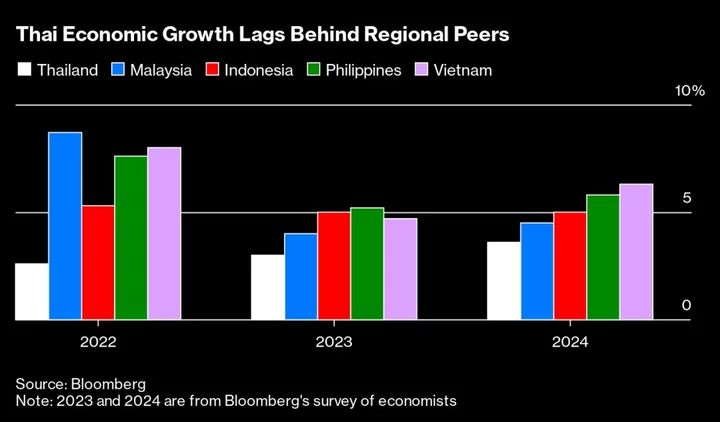US payrolls growth in the year through March is forecast to be weaker than current data illustrate — by one estimate about 500,000 jobs weaker.
JPMorgan Chase & Co.’s Daniel Silver estimates Wednesday’s government preliminary benchmark revision will shave nearly half a million off the level of total employment for March, or about 40,000 fewer jobs per month over the 12-month period.
Even with a downward revision of that size, average job growth would still be strong at around 300,000 payrolls a month. As a result, the revisions would likely not fundamentally alter economists’ views on the health of the labor market.
“While we expect the BLS preliminary estimates to indicate that payrolls growth has not been as strong as initially reported, revisions are not likely to be so large as to suggest a meaningful shift in labor market conditions,” said Oscar Munoz, chief US macro strategist at TD Securities.
Last year, the government’s employment reports consistently surprised economists with larger-than-expected payrolls gains. The figures were also a key reason behind a steady drumbeat of Federal Reserve interest-rate hikes as policymakers scrambled to contain inflation.
Each month, the Bureau of Labor Statistics releases an estimate of payrolls across a range of industries based on responses from a sample of employers. With every fresh monthly jobs report, the two prior months are typically revised as more businesses send in their payroll data.
Once a year, the BLS also benchmarks the March payrolls level to a more accurate but less timely data source called the Quarterly Census of Employment and Wages.
That QCEW data are based on state unemployment insurance tax records and cover nearly all of US jobs. Once the March payrolls figures are aligned to that count, the change is proportionally distributed across the year ended in March.
First-quarter QCEW figures will also be released on Wednesday, but as the data currently stand, reported payroll growth is running stronger than the QCEW data imply. That helps explain why economists expect the preliminary benchmark revision to payrolls to show less job growth. Some Fed officials pointed to this discrepancy, minutes of their June policy meeting showed.
For Munoz, “the message is likely to remain the same; that of a labor market that continues to steadily normalize.”
The durability of the labor market is key to the resilience of the US economy, and economists have been closely watching it for signs of weakness. Job gains have gradually moderated but continue to indicate robust labor demand.
Bloomberg Economics’ Stuart Paul said the QCEW data will likely validate the group’s long-held view that the labor market is weaker than the headlines suggest. But “people who have been outright saying ‘the labor market is tight’ might be in for a shock,” he said.
Standard Chartered Bank’s Steve Englander estimates the downward revision could be around 650,000, with much of that softness concentrated in recent quarters. That would indicate “a much weaker labor market profile” than what underpinned Fed tightening in recent quarters, Englander said. “This would reduce the pressure for further hikes.”
The government’s preliminary benchmark projection will be followed by final revisions that are incorporated into the January employment report that is released in February.
Birth-Death Model
One of the reasons economists have argued that the monthly payrolls data are stronger than the QCEW figures is due to what is known as the birth-death adjustment. In any given month, new businesses open and others close. BLS uses historical data in an effort to adjust for this in various industries in their sample.
“A lot of people actually think that the birth-death adjustment in the establishment survey is too large,” said Jonathan Millar, senior economist at Barclays Plc. But if you look at other data sources, like new business applications, “it suggests that probably the birth-death adjustments are just fine.”
“I wouldn’t be surprised if the revision ended up being smaller to the downside than what you might infer from the fourth quarter,” Millar said. “I also wouldn’t be surprised if it showed a positive revision.”
In fact, he noted that it’s possible the preliminary benchmark announcement could be negative but completely go away by the time the official data are published early next year if the QCEW data are revised higher.









